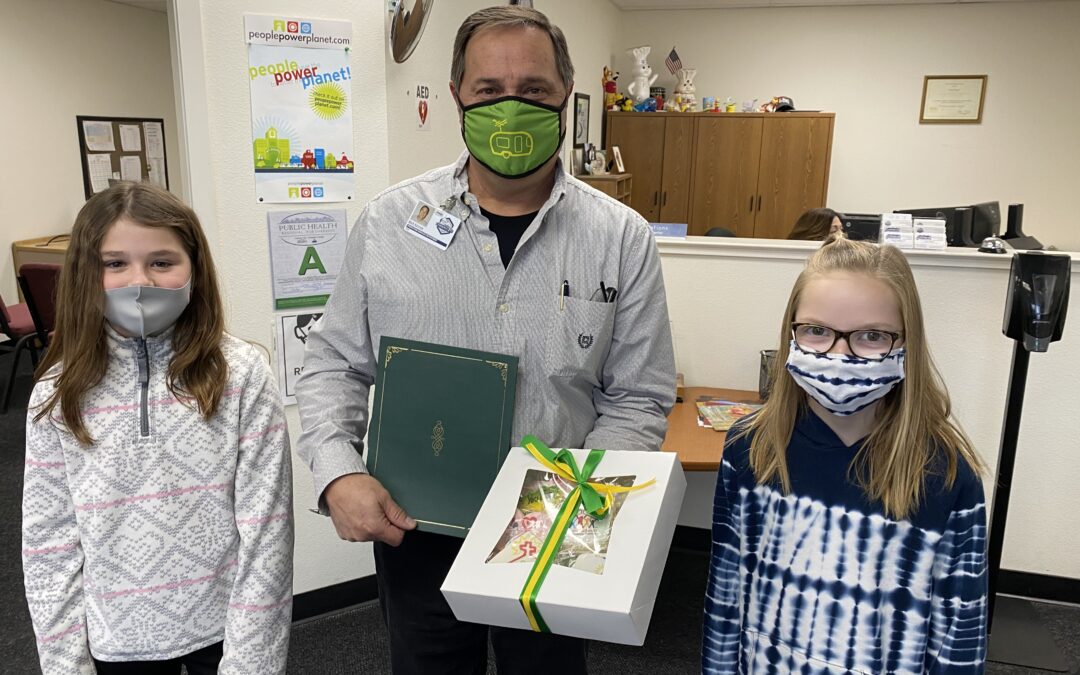Written by: Mark Korinek, Director of Operations and Sustainability with Contribution by Cara Tirado From Carson City School District
The year 2020 was a test for us at Carson City School District (CCSD). Every day we were learning. Every day was a pivot. Every day we were reacting to new infections. We got lucky in that we were already ahead of the game when COVID-19 first hit. Eight years prior we had developed a time-in-motion, process cleaning program we lovingly called CHEE, which stands for Clean-Healthy-Educational-Environments. The process focuses on systematically disinfecting surfaces, spaces, and restrooms using green chemicals and ergonomic equipment. We adopted this system when budget constraints required us to downsize our custodial staff. A couple of months before COVID-19 hit, we started testing Electrostatic spraying in our nursing clinics, reception areas, and multipurpose rooms with great initial results. We thought the upcoming season was going to be rough, with all the Norovirus and SARS outbreaks predicted. Little did we know a global pandemic was on our horizon. Fortunately, our new system happened to work effectively against COVID-19 strains.
A Green Cleaning Solution for Suppressing COVID-19
With time being our main constraint, we implemented the CHEE process geographically throughout our school district’s buildings. Using the new Electrostatic spray disinfectant, we added midday surface, touchpoint, and restroom disinfecting to our program. Because of our custodial staff’s hard work and dedication, we were able to suppress COVID-19 systematically throughout CCSD. It was a struggle for them as individuals and a struggle for our site teams, especially when they came down with the virus. A couple of custodians got sick and recovered, but for the most part they were the district’s virus slayers. Incredible dedication!
As you know, Zoom meetings became the norm within weeks and I used that platform to share my team’s outcomes with anyone and everyone. Word got around about our early success with these new strategies. We were even approached by the WM Pennington Foundation to apply for a William Pennington Fund Grant. The $160,000 grant funded seventeen micro spray fogging SaniCarts and twenty-five ClensAire sanitizing air purifiers for nursing clinics and recovery rooms. SaniCart’s fogging sanitation system ensures a 99.99% COVID-19 kill rate, and since we already had a successful process cleaning system mapped out for each custodian, we were able to integrate the technology seamlessly. I presented our findings and success story at the U.S. Green Building Council’s (USGBC) Mountain Region Green Schools Summit, along with other leaders in school sanitation from across the country. After the conference I realized that many other school districts I talked to, including Chicago, Salt Lake City, and Douglas County (Nevada), were employing the same or similar systems as our team. They were fighting the battle every
day, keeping people safe. We weren’t alone on the battlefront and every day and night, I worried that we would lose a child or staff member.
Keeping a Commitment to Sustainability Alive During a Pandemic
As the year dragged on and we all felt that immense sense of limbo of whether our students would return in the fall, our teachers had an evolution of their own going on. They somehow got through and came out the other end wanting to stay engaged in the sustainability movement and contribute what they could to sustainability education. When we were finally able to come together and collaborate again, it was evident that they weren’t going to let the ball drop on their end. CCSD still had dreams of moving the sustainability needle forward no matter the current state, and sometimes because of the current state.
The world may have paused during the thick of COVID-19, but we didn’t let it get in the way of our sustainability goals. We continued to meet regularly with our organizers and partners, including TESLA, Green Schools National Network, and our curriculum partners at Envirolution, to push a number of initiatives forward. Some of these initiatives included redeveloping pacing guides to include the United Nations Sustainable Development Goals (SDG), K-12 spiraling at early adopter schools, K-12 sustainability teacher training, and developing a high school level Environmental Science course using phenomenon-, place-, project-, and problem-based curriculum. While this internal work was being completed, some external projects were continuing as well. These projects included purchasing and installing twenty new bottle-filling stations throughout our schools, constructing a vermicomposting facility at the high school, purchasing two electric buses with help from our local utility and the U.S. Environmental Protection Agency, and continuing work on a 23,000-square-foot addition to Eagle Valley Middle School that includes two STEM labs, an SDG learning wall, an outdoor classroom with amphitheater, and a greenhouse.
So many difficult lessons have been learned since March 2020, so many lives were forever changed. With the dust settling and the panic subsiding, we are learning to navigate our new reality. As the most energy-efficient school district in Nevada, CCSD has a responsibility to uphold and maintain the sustainability goals we set forth to attain and we intend to attain them one step at a time.
Our state is moving forward with sustainability at the forefront. The Nevada Division of Environmental Protection has created Partners for a Sustainable Nevada. This partnership brings together NGOs, businesses, and government agencies to foster communication and collaboration, promote sustainability programs statewide, and create a definition for sustainability as it relates to Nevada. We are in a spot in our state’s history where all the players are rising to the challenge.
Now that we get to see each other face-to-face, it’s time to unify and collaborate. CCSD already has sustainability written into our strategic plan. Now we get to see it through.

